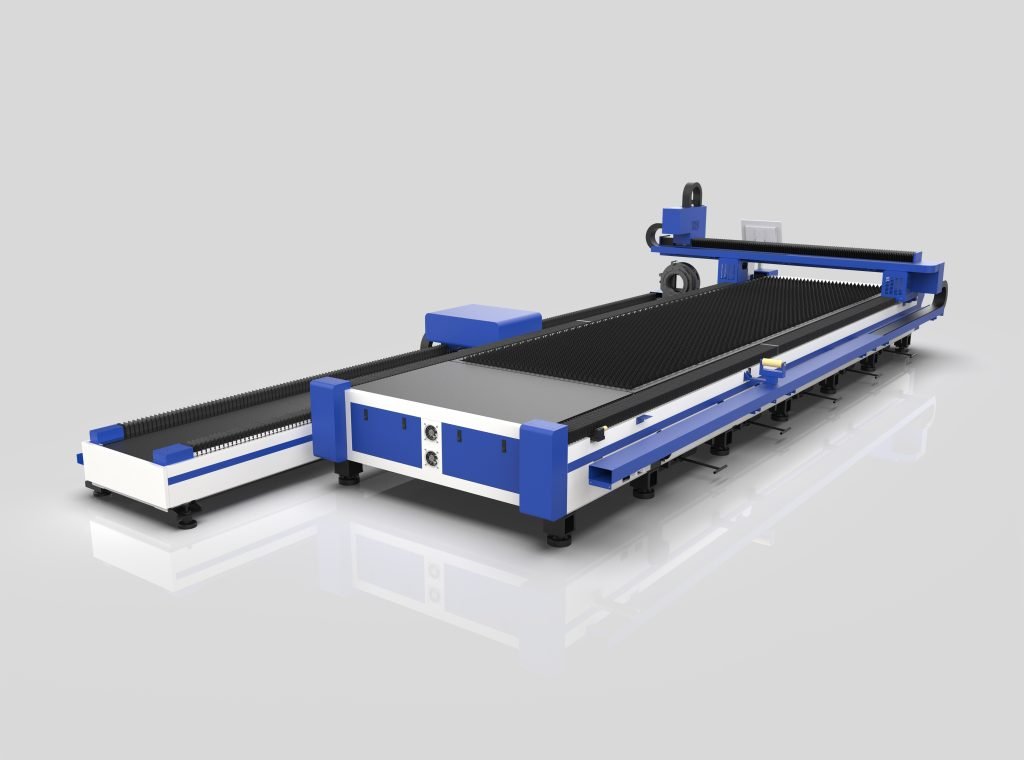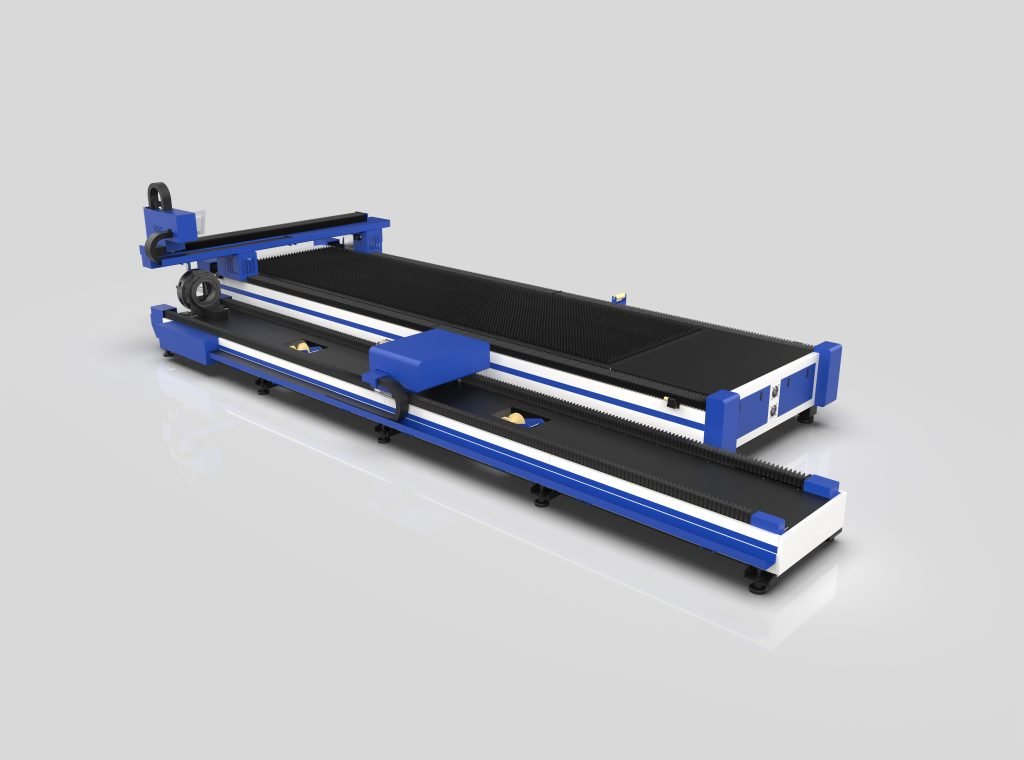The global manufacturing industry is rapidly evolving. In this context, the China laser plate cutting machine industry has become a significant player. With the advent of advanced technology, supply chain management has gained critical importance. Companies now strive to optimize their supply chains. The goal is to enhance efficiency, reduce costs, and improve product quality.

I. The Importance of Supply Chain Management
Supply chain management is the backbone of any manufacturing process. It involves coordinating all aspects of production. This includes sourcing raw materials, manufacturing, and delivering finished products. For the China laser plate cutting machine industry, an efficient supply chain is crucial. It ensures timely production and delivery of high-quality machines.
Moreover, the supply chain directly impacts a company’s competitiveness. A well-managed supply chain can reduce operational costs. It can also increase customer satisfaction. Therefore, optimizing the supply chain for laser plate cutting machines is essential for staying competitive.
II. Challenges in the Supply Chain
The China laser plate cutting machine industry faces several supply chain challenges. One major challenge is the complexity of global supply networks. Components and materials often come from different countries. This makes coordination and timing critical.
Additionally, fluctuating raw material prices pose another challenge. These fluctuations can disrupt production schedules and increase costs. Moreover, the demand for laser plate cutting machines can vary significantly. This variability makes it difficult to maintain a stable supply chain.
Another challenge is the need for precise inventory management. Overstocking can lead to increased costs. Conversely, understocking can result in production delays. Therefore, balancing inventory levels is a critical aspect of supply chain management.
III. The Role of Technology in Supply Chain Management
Technology plays a vital role in optimizing the supply chain. For the China laser plate cutting machine industry, integrating smart technology is key. Advanced software solutions can help monitor and manage every aspect of the supply chain.
For instance, real-time tracking systems provide valuable insights. These systems allow companies to monitor the movement of goods. They can also track inventory levels and manage deliveries. This level of visibility is crucial for optimizing the supply chain.
Moreover, automation is becoming increasingly important. Automated systems can streamline production processes. They can also reduce the need for manual labor, thereby lowering costs. In the context of the plaser plate cutting machine industry, automation ensures consistent quality and faster production times.
IV. Smart Inventory Management
Effective inventory management is essential for optimizing the supply chain. Companies in the China laser plate cutting machine industry must maintain a delicate balance. They need to ensure they have enough inventory to meet demand. However, they must also avoid overstocking.
Smart inventory management systems can help achieve this balance. These systems use advanced algorithms to predict demand. They analyze historical data and market trends. Based on this analysis, they optimize inventory levels.
Moreover, these systems can automate reordering processes. When inventory levels fall below a certain threshold, the system can automatically place an order. This ensures that production never halts due to a lack of materials.
V. Supplier Relationships and Collaboration
Strong relationships with suppliers are crucial for a smooth supply chain. For the China laser plate cutting machine industry, collaboration with suppliers can lead to better outcomes. Companies should work closely with their suppliers to ensure timely delivery of high-quality materials.
Moreover, open communication with suppliers is essential. It helps in addressing potential issues before they escalate. Regular meetings and updates can foster a strong partnership. This collaboration can lead to more reliable supply chains.
Additionally, companies should diversify their supplier base. Relying on a single supplier can be risky. If that supplier faces issues, it can disrupt the entire supply chain. Therefore, having multiple suppliers can provide a safety net.
VI. The Impact of Globalization
Globalization has significantly impacted the China laser plate cutting machine supply chain. Companies now source materials and components from around the world. This has led to more complex supply chains.
However, globalization also presents opportunities. Companies can take advantage of lower costs in different regions. They can also access a broader range of materials and components. This diversity can lead to more innovative products.
Nevertheless, globalization also introduces risks. Political instability, trade wars, and natural disasters can disrupt global supply chains. Therefore, companies must be prepared to adapt to these challenges. They need to develop contingency plans to mitigate potential disruptions.
VII. Sustainability in the Supply Chain
Sustainability is becoming increasingly important in supply chain management. The 레이저 판재 절단기 industry is no exception. Companies are now focusing on reducing their environmental impact.
For instance, they are sourcing materials from sustainable suppliers. They are also optimizing production processes to reduce waste. Moreover, they are focusing on energy efficiency. This not only benefits the environment but also reduces costs.
Additionally, companies are adopting circular economy principles. This involves recycling and reusing materials. By implementing these practices, companies can create a more sustainable supply chain.
VIII. The Role of Data Analytics
Data analytics is transforming supply chain management. For the China laser plate cutting machine industry, data-driven decisions are becoming the norm. Companies are using data analytics to gain insights into their supply chains.
For instance, data analytics can help identify inefficiencies. Companies can analyze data from various sources. This includes production data, inventory levels, and delivery times. By identifying bottlenecks, they can implement targeted improvements.
Moreover, predictive analytics is becoming increasingly important. Companies can use predictive models to forecast demand. This helps in planning production schedules and inventory levels. As a result, they can avoid overproduction and underproduction.

IX. The Future of Supply Chain Management
The future of supply chain management in the China laser plate cutting machine industry looks promising. As technology continues to advance, supply chains will become more efficient and resilient.
One key trend is the use of artificial intelligence (AI). AI can optimize supply chain processes in real-time. It can analyze vast amounts of data and make instant decisions. This leads to faster response times and more efficient operations.
Another trend is the use of blockchain technology. Blockchain can provide transparency and traceability in the supply chain. It allows companies to track every step of the production process. This transparency can build trust with customers and suppliers.
Moreover, the Internet of Things (IoT) is playing a growing role. IoT devices can monitor and control various aspects of the supply chain. This includes tracking shipments, monitoring inventory levels, and ensuring product quality.
X. 결론
In conclusion, the China laser plate cutting machine industry is at the forefront of supply chain innovation. By embracing smart technology, companies can optimize their supply chains. This leads to increased efficiency, reduced costs, and improved product quality.
Moreover, strong supplier relationships, effective inventory management, and a focus on sustainability are essential. As globalization continues to impact supply chains, companies must adapt to new challenges and opportunities.
The future of supply chain management looks bright. With advancements in AI, blockchain, and IoT, the plaser plate cutting machine industry is well-positioned to lead the way. By staying ahead of these trends, companies can ensure their supply chains remain competitive and resilient in a rapidly changing world.